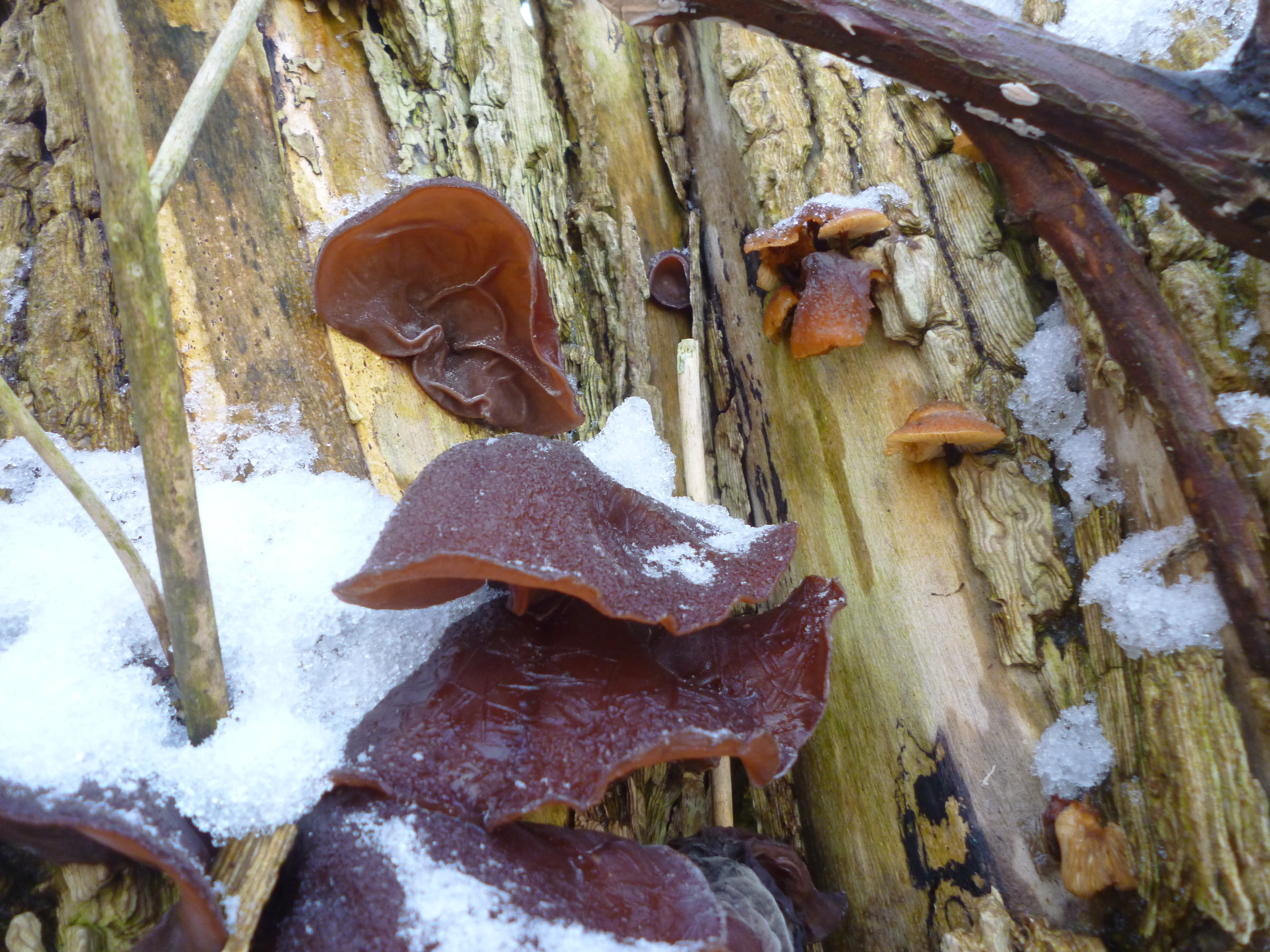After finding out that Japanese Knotweed was edible (use the young shoots as you would rhubarb) I began a quest to find out what other invasive weeds could end up on the dinner plate. I came across a German man called Peter Becker who it seems shares some of my passion for eating invasive species. Amongst other things he had found some edible uses for Himalayan Balsam, a plant which is choking out a lot of the native plants along river banks in Bristol. I emailed him and received this reply –
“Impatients glandulifera is slightly toxic in all parts but the flowers and seeds; both of which can even be consumed raw. I`m preparing Jelly and brewing Vinegar with the flowers and Marzipan from the seeds.
Yet even the young stems are edible after being blanched in a change of water and yield a crispy vegetable; that although it doesn`t have much flavor is a wonderful addition with much plate appeal to stirfries or pickles. And since Bachflower # 19 is renowned for it`s calming effects; we who bash Himalyan Balsam with Fork & Knife get rewarded with the nutritional benefits of this wonderful plant.”
This was late June and from observing the plant near my house I knew it was soon to flower. I waited a couple of weeks and in early July I set to work harvesting the flowers and bashing the plant as I went. I found I could pull up the plant root and all quite easily so I yanked on each plant as I removed the flower. By mid-July there was a lot more of the plant in flower and so again I set to work.
From experimenting I found the flower was rather bland but mixed in with a little dressing and some more flavoursome leaves it made an attractive addition to a salad. However the amount needed in a salad by no means corresponded with the amount available – I clearly needed a use for it in bulk.
I found a recipe for Rose petal preserve and adapted it a little for the balsam. I found it also made a bonus by-product of Balsam sweets! This recipe makes one jar but scale up if you’ve found a good source of the plant and don’t forget to bash the balsam as you pick!
Ingredients
- 2oz, 50g Himalayan Balsam Petals
- ½ lb, 250g Sugar
- 2fl oz, 50ml Water
- 1 tbs Lime Juice
- 1 tbs Lemon Juice
- (you can use 2tbs of one or the other or use fresh orange juice or squeezy lemon)
Method
- Cut away all but the petals of the balsam
- Boil the juice, sugar and water to make a syrup
- Add the petals and cook on the lowest heat for about half an hour stirring all the time
- Strain through a fine sieve (the contents of the sieve can be separated out on a plate and eaten like sweets)
- Pot in heat sterilized jars (jars and lids that have been boiled and are still warm)
It makes a clear pink preserve which is incredibly sweet. The colour is so vivid that I would use it to colour jellies, jams and cordials. I use the jar as a sweet spread and put it on ice-cream.
It could also be used as a topping for trifles or other deserts.
The seeds are also edible and I have successfully made into a nut burgers using a recipe for sunflower seed burgers.
Happy Bashing!
Article written by Dave Hamilton. Dave has now left Selfsufficientish but you can catch up with him on davehamilton.me.uk or on twitter @davewildish



It’s now July 2010, I’ve since tried the seeds – they have a walnut like taste and are very versatile. If you grind them up in a coffee grinder they make a very tasty nut burger.
I live in ontario canada and we have lots of Himalyan balsm. They are supposed to be related to a wild species here called Jewel weed, which is supposed to CURE the effects of poison ivy. I can’t remember which part but I do believe its the juice from the stems. Could they be used for this since the physical make up is so similar? We have a nice contained area for them and keep them in check as they do spread, fortuanately they are easy to pull. We have 4 dogs, the balsam literally eat the dog droppings in about a day, with no smell left. I didn’t know you could eat the seeds though, we also have Nigella which are also invasive in the sense that they grow anywhere. I love these plants, and contrary to what I am hearing they don’t take the bees away from the other 100 or so other species we have in our garden. Thanks for the information, and yes of course we are very careful with these however they are everywhere in Ontario, my grandmother had them growing against her barn (maybe they ate the cow poo?)and she loved the beautiful colours, right next to her apple orchard! I would love to hear from you on the similiarities of jewel weed and himalayan balsan.
Hello Anita, Both Jewel weed and Himalayan Balsam are closely related, they are of the Impatiens genus so as related as Broccoli and Cabbage. In the UK we have Impatiens glandulifera or Himalayan Balsam whereas in the US and Canada it seems you have Impatiens biflora and Impatiens pallida or jewel weed.
There’s an American forager called Steve Brill who eats the seeds of jewel weed just as I do with Balsam.
Never heard of a plant eating poo that quickly! Maybe you have a Triffid 😉
Himalayan balsam is an annual, so the big problem is the seeds, not the plant itself. It self-sows vigorously, and takes over any area where it seeds, driving out native plants.
We balsam bash before the plant flowers to prevent seeding, but once it flowers, the seeds will develop even if you pull it up.
Thanks for giving us something to try with the flowers themselves.
Hi Dave, heard chap today on the radio say that HB seed was edible, googled to make sure he wasn’t a nutter before I tried it, and it went straight to your site.
I just dry roasted a few and found they were quite walnutty, very nice. Good to know every seed you eat is one less of the purple river monsters. Regards to you and yours, Maggie.
An excellent tutorial. I wish we had weeds like these in Australia! We are stuck with blackberries and periwinkle and gorse with a dose of bracken fern thrown in ;).
Believe me narf – you do not want this weed in Australia -you have enough problem species as it is.
Hi and thanks a lot for sharing this useful info in English! Im Danish and have stumbled across this incredible plant for the first time and my German is really rusty 🙂
How about that toxicity? I mean symptoms, level of toxicity, how to remove, etc.. Is there any info available perhaps?
Btw. we are already using a lot of other bland tasting plant-parts with an interesting texture, but is perhaps not aware of it? I think of Capers and olives as very popular options. They both needs to be cured and treated to have any interesting culinary appeal and yet they popularity is evident. cocoa beans, coffee beans, teas could also be mentioned in this context, but are all very different in nature. If we care to process a little, I think many plants that are otherwise considered useless can be used with great success in the kitchen!